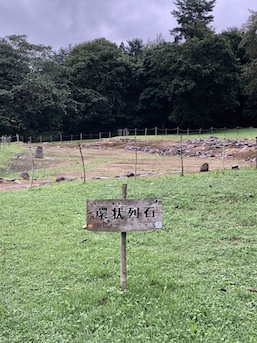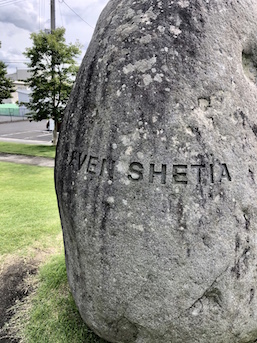Aomori Art and Archeology
Japan is home to ancient creative traditions, and Aomori is at the heart of it. The world’s oldest pottery, from around 14,500 BC, was discovered here. A 3.5-hour bullet-train ride north of Tokyo, this prefecture has a reputation as being traditional, but it is also home to some of Japan’s most innovative contemporary art. The four cities of Aomori, Hirosaki, Towada, and Hachinohe make up the prefecture’s “art zone.”
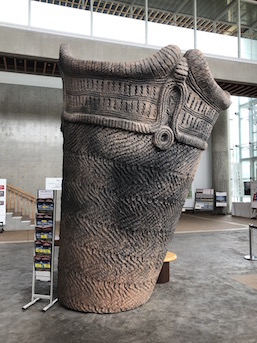
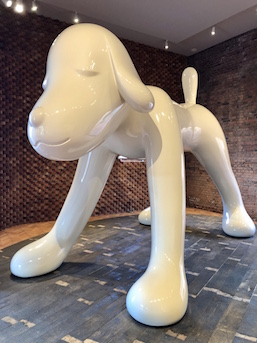
Aomori’s artistry thrived all the way back in the Jomon period (13,000–300 BC). This era was named for the cord markings on its pottery, a decorative practice that would develop into intricate variations over millennia. There are some 3,000 archeological sites in Aomori Prefecture today, and 60% of them are Jomon. These ruins of ancient civilization are currently being considered for UNESCO World Heritage status. The Sannai Maruyama Special Historical Site and the Komakino Site, both in Aomori City, and the Korekawa Archeological Institution in Hachinohe, are excellent spots to see Jomon art and artifacts right where they were discovered. At the first two sites it is possible to walk the actual excavation grounds.
For contemporary art, head to the Aomori Museum of Art (next to the Sannai Maruyama Site), the recently opened Hirosaki Museum of Contemporary Art, or the Towada Art Center. Hirosaki City Dashi Display Museum and Neputa Village in Hirosaki exhibit folk art in the form of community-made festival floats. Aomori offers immersion in art from all eras.
Aomori City
Sannai Maruyama Special Historical Site
This archeological site and museum roughly the size of Tokyo Disneyland introduces Jomon history and culture. Stroll through the grounds of a village people lived in thousands of years ago, where you can now see burial pits and recreated Jomon architecture. Artifacts are still being found at this National Historic Site, with pottery reassembly and restoration taking place in the museum work studio. Check out Jomon tools, jewelry, doki pots, and dogu clay figurines. Try making some of these Jomon objects in a workshop.
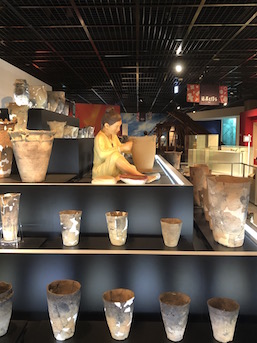
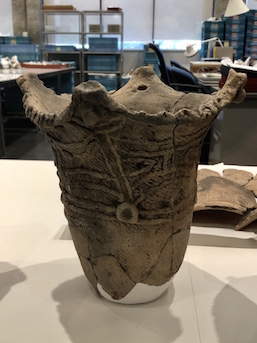
Aomori Museum of Art
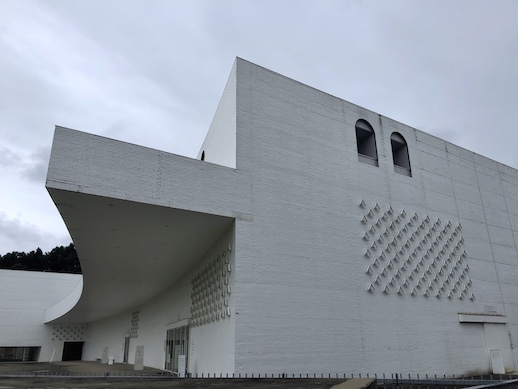
Architect Jun Aoki drew much of his inspiration for this world-class contemporary art museum from the neighboring Sannai Maruyama site. He designed it to have narrow channels resembling the excavation trenches, with earthen brown walls that contrast with the white spaces of the galleries.
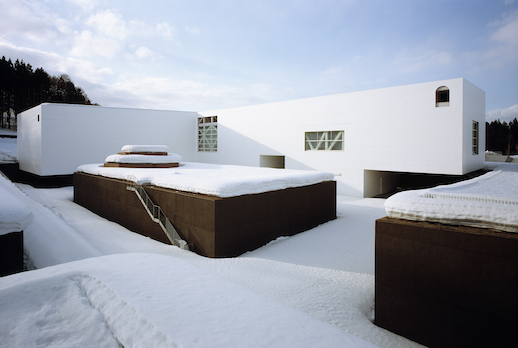
The museum holds a collection of 4,700 works. It places a special focus on artists from the prefecture, such as the international pop-art darling Yoshitomo Nara and the renowned woodblock printmaker Shiko Munakata. Its permanent works are displayed in four shows annually, organized around different themes. At the heart of the museum is a four-story atrium, Aleko Hall. Here you can see recreations of Marc Chagall works. For more information on Aomori Museum of Art, please see our previous report.
Komakino Site
A 30-minute drive from Shin-Aomori Station, the Komakino Site is a rewarding trip for fans of ancient mysteries. Its concentric stone circles, dating back some 4,000 years, were discovered by high-school students, and much remains unknown about their original intended use.
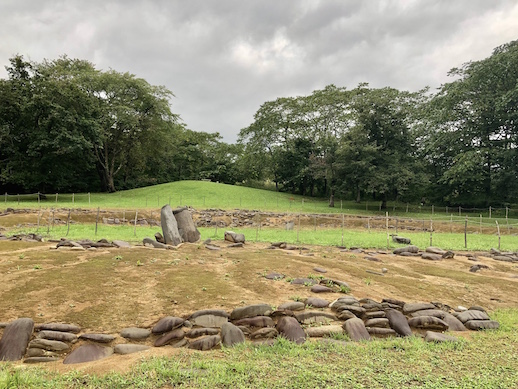
The Komakino Site Preservation Museum, housed in what was formerly an elementary school, gives explanations about the site and Jomon culture in general with excellent English materials. Here you can see plenty of relics uncovered at Komakino.
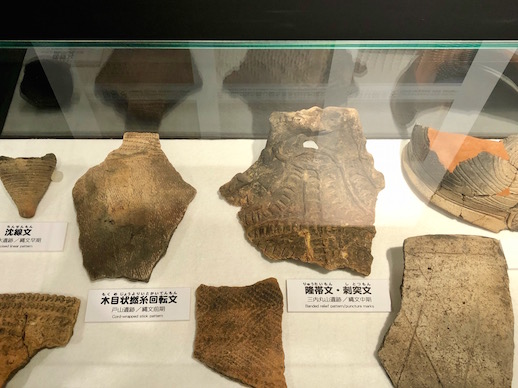
Hirosaki
Hirosaki Museum of Contemporary Art
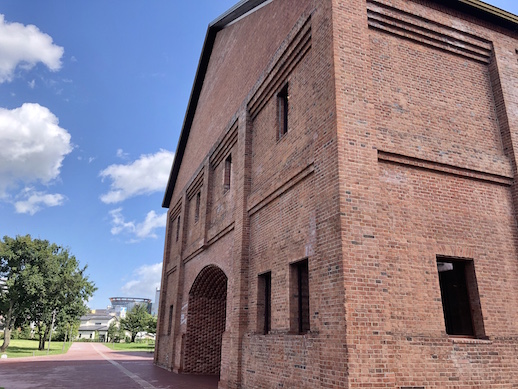
Hirosaki Museum of Contemporary Art opened its doors in spring 2020 following renovations to its century-old brick building, once a cider brewery. The inaugural exhibition “Thank You Memory: From Cidre to Contemporary Art” focused on this place as a site of modern industrial heritage. In addition to locally researched works by eight contemporary artists from around the world, the show spotlighted the building’s renovation process and works created with the cooperation of local residents. With this first exhibition, the museum established itself as a “memory device” for passing down Hirosaki culture to future generations.
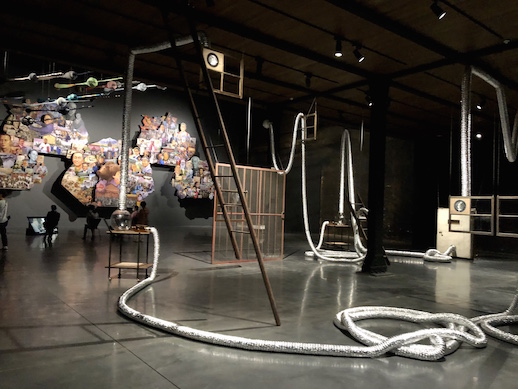
The exhibition showcased items from the former warehouse, such as glass bottles and signs, displayed along with the contemporary artworks. Aki Sasamoto presented a laboratory-esque brewing installation. Hikaru Fujii created a film recounting the building’s history. The new works, including Navin Rawanchaikul’s homage to Hirosaki in the form a massive mural complete with scenes of Jomon life, will remain in the permanent collection. The museum plans to hold two main exhibitions a year of contemporary art and works pertinent to the culture of Hirosaki and Japan’s northern Tohoku region.
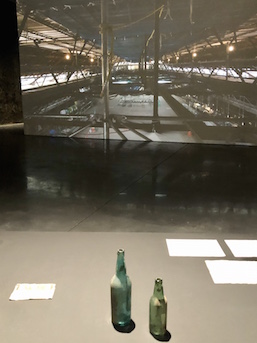
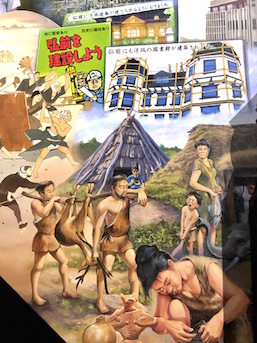
Hirosaki City Dashi Display Museum
Hirosaki also has folk art to enjoy. The Hirosaki City Dashi Display Museum is a small hidden gem displaying dashi festival floats that have been locally made since 1682. Animals, yokai, folklore heroes, and even a giant radish appear as icons that have been paraded down the streets. It is easy to imagine their lively processions through Aomori villages as people hoped for good harvests and peaceful, prosperous seasons.
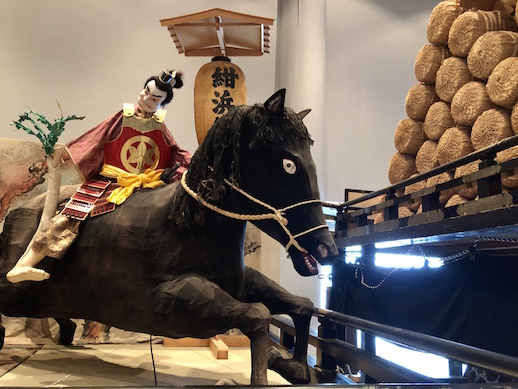
Neputa Village
Neputa are another kind of festival float that you can see in Hirosaki. Neputa Village pays year-round tribute to the famous Neputa Matsuri festivals, which feature giant paper constructions of warriors and other popular characters. Neputa Village also lets visitors appreciate Hirosaki handicrafts like wooden kokeshi dolls. Roam through the displays and stalls and stop by the Japanese teahouse and garden.
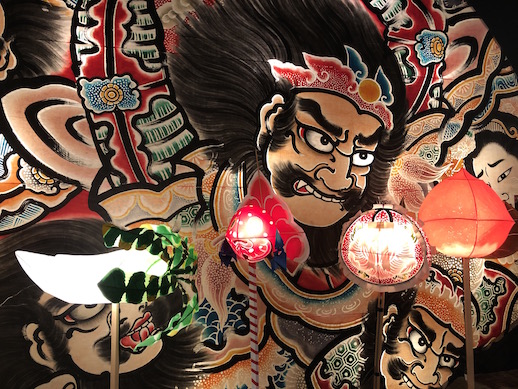
Towada
Towada Art Center
Celebrating its 10th anniversary in 2020, Towada Art Center was built as part of a project to reinvigorate the city of Towada through contemporary art. Its collection of 38 works was made exclusively for the site by leading artists including Yayoi Kusama and Jim Lambie. Through the spring of 2022, the museum is holding a three-part commemorative exhibition called “Inter + Play.” Intended to “connect the art, the city, and the community,” it features new works by another group of top creators. Yasuhiro Suzuki has installed a sculpture referencing Aomori’s culture of apple farming – a stack of apples extends skyward, rising out of “water” in the shape of Towada City, with ten ripples symbolizing the museum’s first decade.
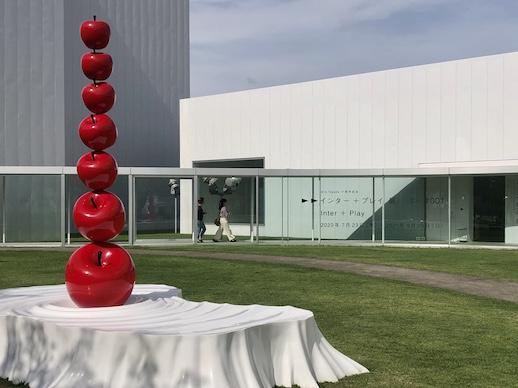
Created for Part 1 of “Inter + Play” (through August 29, 2021), ‘Truth/Freedom’ is a site-specific installation by Megumi Matsubara. It was inspired by the color of Lake Towada’s red rocks, said in legend to come from the blood of a dragon. A sound recording embodies the delicate voices of “red,” changing pitch according to time of day. Shin Morikita’s “Flying Man and Hunter” sculpture, part of the permanent collection, is made up of two figures perched in a space between buildings. These characters dotted with holes appear frozen in action when we gaze up at them. The work makes us think about their relationship and the use of interval spaces.
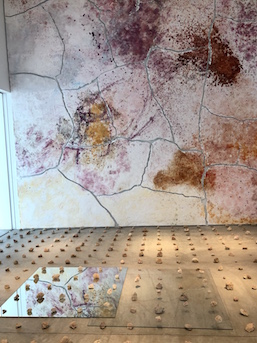
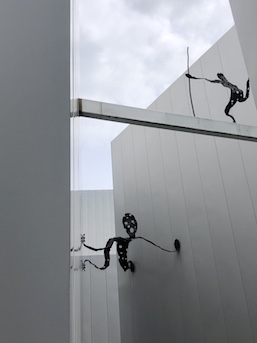
Michiko Tsuda experiments with perceptions of time and space with this installation of mirrors, frames, and video screens. As you enter, a reflection of yourself appears somewhere you don’t expect. Tsuda recreated this work for “Inter + Play.”
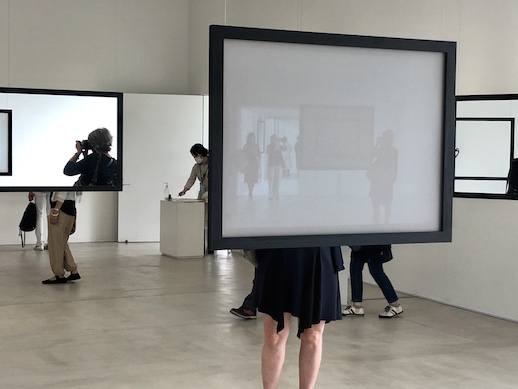
A trio of works by Yoko Ono: a bell from the Kyoto temple Daikaku-ji, a path of cobblestones, and an apple tree onto which visitors can tie strips of paper written with their wishes. The paper strips are delivered to Ono once a year and kept in Imagine Peace Tower, a monument for world peace in Reykjavik, Iceland.
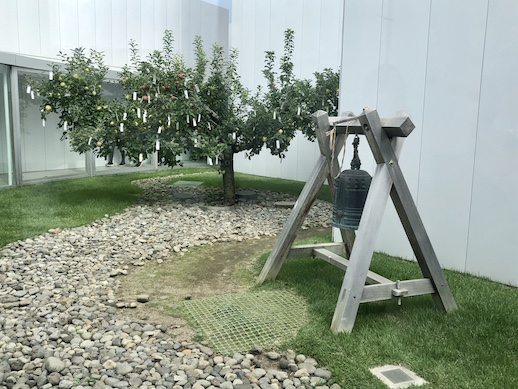
Special events like outdoor markets at Towada Art Center bring the community together. Ignes Idee’s ‘Ghost & Unknown Mass’ looks on.
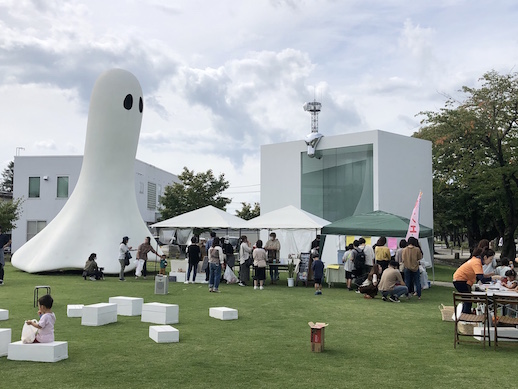
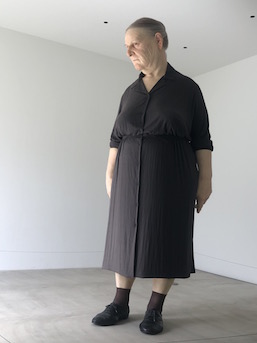

Hachinohe
Korekawa Archaeological Institution
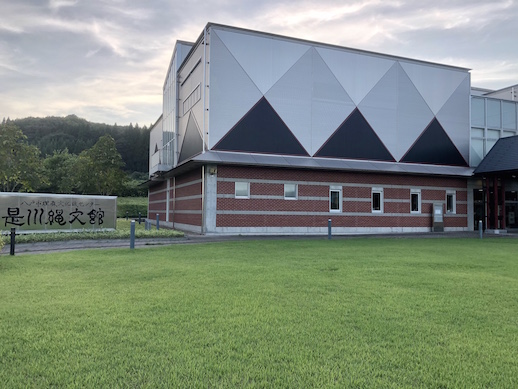
Several of the doki pots at the Korekawa museum display contrasts of patterned and unmarked designs (surikeshi), an advanced form of artistry from the Late Jomon period. The clay figurines here are fascinating, too. Believed to have been created and modeled after women, these intricately decorated dogu are thought to have been created with prayers for good fortune and health before being ceremonially broken, perhaps to “return them to the earth.” Most of the dogu, like the head of the one below, show intentional breakage.
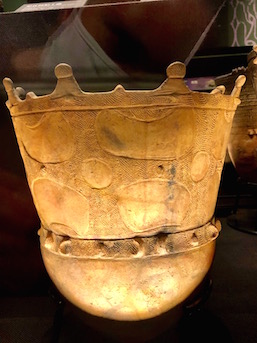
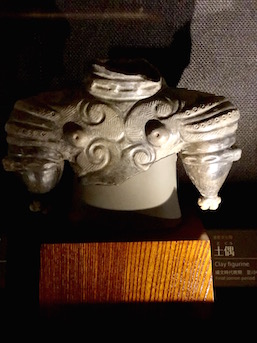
The Korekawa collection is also known for its rare Jomon lacquerware. Objects for both everyday life and special rituals are painted with this vivid red and deep black gloss. The difficulty of lacquering speaks not only to the beauty sought by Jomon artists, but also to the importance that this art form must have held in their society.
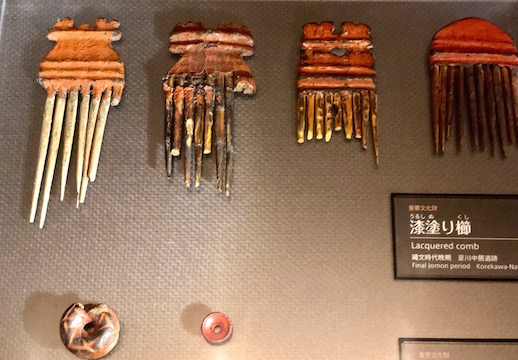
The crown jewel of the Korekawa Archeological Institute is the Gassyo Dogu, a National Treasure remarkable among clay figurines for its three-dimensional seated pose with clasped hands. Some researchers interpret this posture to be praying, others to be giving birth. Unlike most dogu, it was discovered in a pit dwelling and seems to have been repaired with tar, demonstrating its great significance to its civilization.
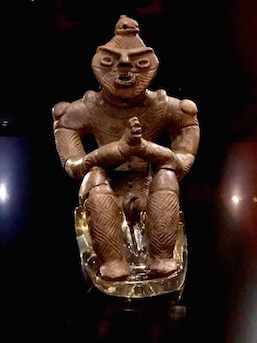
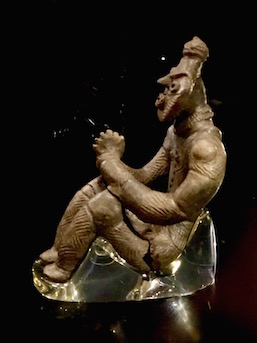
In Conclusion
Aomori Prefecture offers art lovers wonderful juxtapositions of the ancient and the contemporary. Its roots as a creative culture run deep and continue to flourish today. No visit would be complete without experiencing both its pre-modern and modern sides, so whether its to an archeological site, a vibrant festival, or a contemporary art museum, make the most of its journeys back in time and to the cutting edge of creation.
